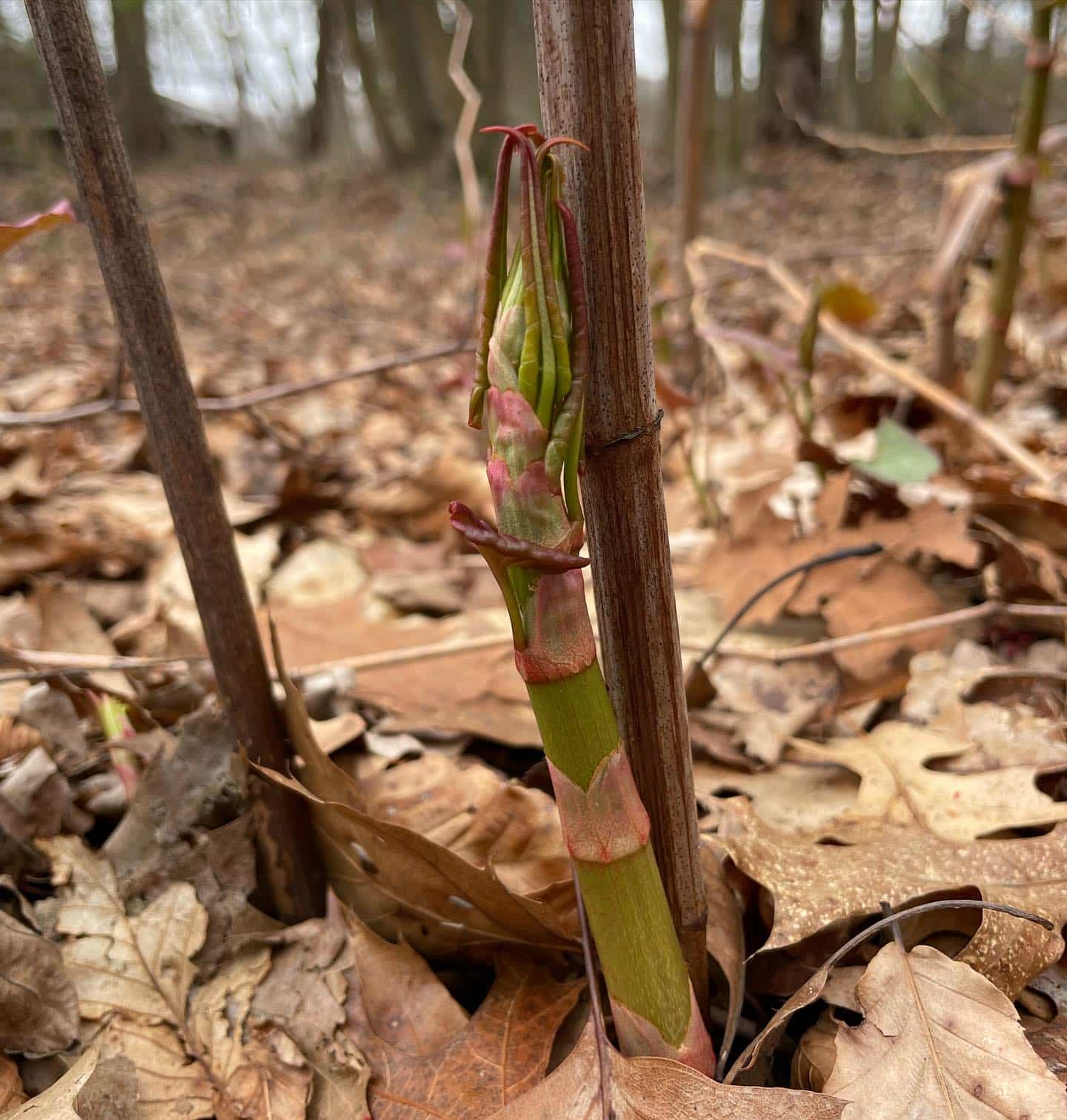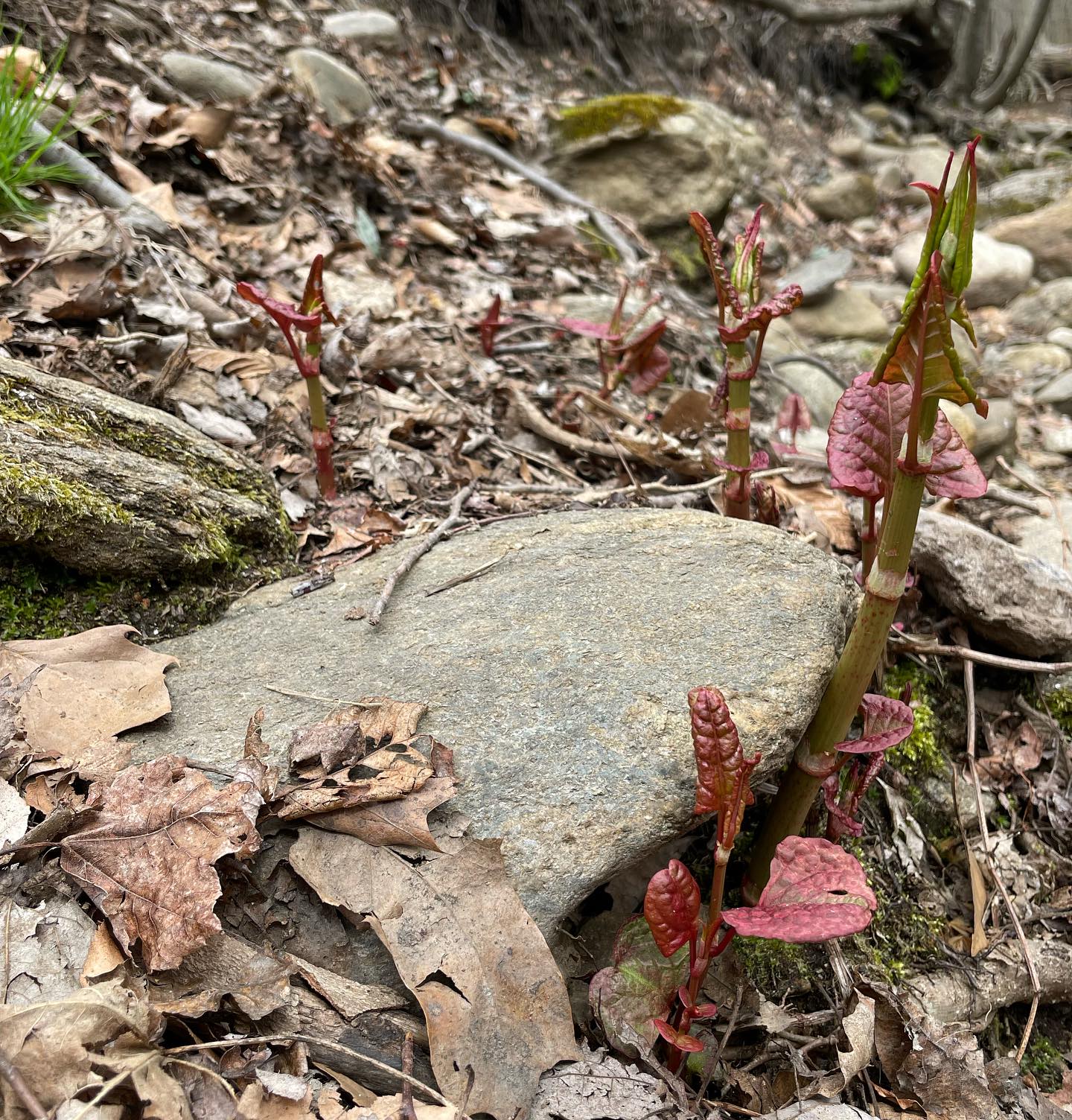Page Created by Connecticut Foraging Club
Upcoming Events | Meet the Instructors | Plant Archive | Mushroom Archive
----------------
Upcoming Events | Meet the Instructors | Plant Archive | Mushroom Archive
----------------
Japanese knotweed (Reynoutria japonica) is an invasive perennial that was brought to the U.S. from Asia as an ornamental.

Japanese knotweed can be found in moist areas that receive sunlight. It often grows in large thickets in disturbed areas. It can grow up to 15 feet tall and its root system can reach 20 feet in depth. Japanese knotweed can even grow through concrete. A new plant can regrow from any small part of the plant.
Japanese knotweed has hollow and segmented stems with a blotchy red appearance. Leaves are triangular, becoming heart-shaped with age. In the summer, the plant develops cream-colored flowers.

Japanese knotweed is considered a mountain vegetable in Japan, where it is peeled and then parboiled or pickled. The shoots can be collected in the spring when the plant is less than 2 feet tall. Look for thicker shoots that make a crisp sound when snapped. The shoots can be peeled as the outer skin has a stronger flavor.
Shoots can be snacked on raw. They have a sour taste, similar to rhubarb. Shoots can also be added to salads, pickled, turned into soup, or made into wine. In the summer, the flowers can be made into a cordial.
Japanese knotweed has high levels of resveratrol, the polyphenol in wine that gives wine it’s medicinal properties. Resveratrol is used to fight Lyme disease, reduce dementia, and boost the immune system. Japanese knotweed roots have the highest concentration of resveratrol in any known plant. In fact, knotweed from Asia is the leading source of resveratrol for supplements.

It is extremely important to be cognizant of where you put any Japanese knotweed scraps when cooking with it. Scraps must be microwaved or boiled before putting in your compost pile as any small part of the plant can create a new patch.
--
Written by Amy Demers, founder of the Connecticut Foraging Club. To learn more about foraging in Connecticut, check out our upcoming classes.






